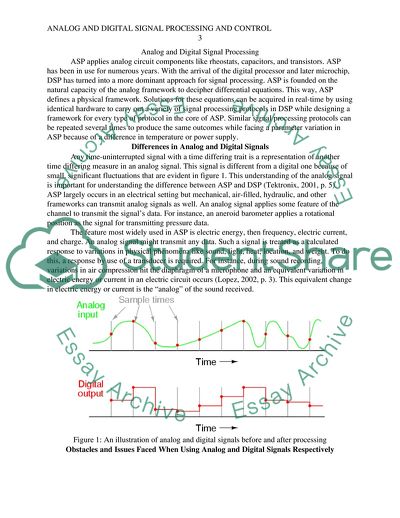Cite this document
(Differences Between Analog and Digital Signal Processing and Control Literature review Example | Topics and Well Written Essays - 2000 words, n.d.)
Differences Between Analog and Digital Signal Processing and Control Literature review Example | Topics and Well Written Essays - 2000 words. https://studentshare.org/information-technology/1837624-explain-the-differences-between-analog-and-digital-signal-processing-and-control
Differences Between Analog and Digital Signal Processing and Control Literature review Example | Topics and Well Written Essays - 2000 words. https://studentshare.org/information-technology/1837624-explain-the-differences-between-analog-and-digital-signal-processing-and-control
(Differences Between Analog and Digital Signal Processing and Control Literature Review Example | Topics and Well Written Essays - 2000 Words)
Differences Between Analog and Digital Signal Processing and Control Literature Review Example | Topics and Well Written Essays - 2000 Words. https://studentshare.org/information-technology/1837624-explain-the-differences-between-analog-and-digital-signal-processing-and-control.
Differences Between Analog and Digital Signal Processing and Control Literature Review Example | Topics and Well Written Essays - 2000 Words. https://studentshare.org/information-technology/1837624-explain-the-differences-between-analog-and-digital-signal-processing-and-control.
“Differences Between Analog and Digital Signal Processing and Control Literature Review Example | Topics and Well Written Essays - 2000 Words”. https://studentshare.org/information-technology/1837624-explain-the-differences-between-analog-and-digital-signal-processing-and-control.


